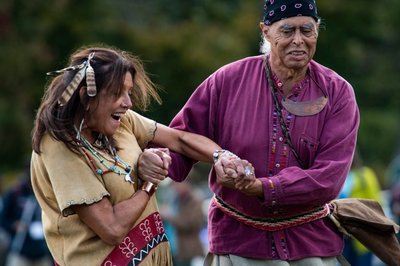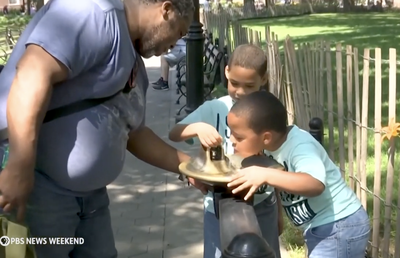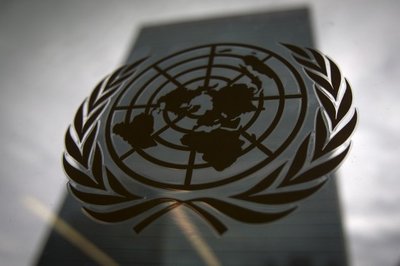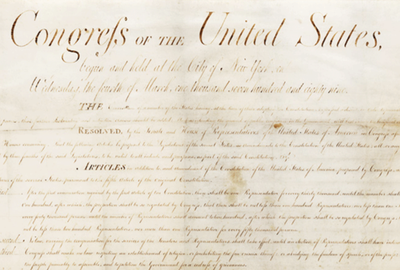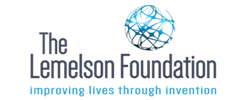Overview
In this lesson,
students will watch a PBS Newshour segment on the barriers to reentering society after prison, and then they will engage in a Socratic Seminar on the topic.
Students will address the question:
why do formerly incarcerated face barriers while
reentering society after prison?
This lesson is part of our Searching for Justice series on criminal justice reform.
Objectives
- Students will analyze the barriers formerly incarcerated face in reentering society after prison.
- Students will determine the central ideas or information of a primary or secondary source.
Subjects
U.S. history, U.S. government & civics, criminal justice, legal studiesGrade Levels
Grades 9-12Supplemental Links
Standards
-
Common Core
CCSS.ELA-LITERACY.RH.11-12.1: Cite specific textual evidence to support analysis of primary and secondary sources, connecting insights gained from specific details to an understanding of the text as a whole. CCSS.ELA-LITERACY.RH.11-12.9: Integrate information from diverse sources, both primary and secondary, into a coherent understanding of an idea or event, noting discrepancies among sources.
-
C3 Standards
D2.His.3.6-8. Use questions generated about individuals and groups to analyze why they, and the developments they shaped, are seen as historically significant. D2.His.3.9-12. Use questions generated about individuals and groups to assess how the significance of their actions changes over time and is shaped by the historical context.
This lesson is part of PBS NewsHour's Searching for Justice series on criminal justice reform. For a Google doc version of this lesson, click here.
Introduction
After decades behind bars, older men and women in the U.S. continue to face challenges upon reentering society. In this lesson, students will learn about "invisible barriers" including public policies that make life difficult for formerly incarcerated individuals reintegrating into society. They will analyze key concepts in the field of criminal justice and gain a deeper understanding of how public policy affects individuals long after they did their time.
Subjects
Social studies, civics, U.S. history, criminal justice, health, economics
Grades
9-12, easily adapted for grades 6-8
Materials
Pen and paper
Printer
Internet connection
Objectives
- Students will analyze the barriers formerly incarcerated face in reentering society after prison.
- Students will determine the central ideas or information of a primary or secondary source.
Warm-up activity
Students will develop their own definitions of key concepts that will help them better understand barriers to reentering society after time in prison or jail. This activity is inspired by New Visions for Public Schools' curriculum.
- Divide the class into groups of three or four. Have each group write down the following concepts on small pieces of paper.
- incarcerated: imprisoned or confined
- holistic solution: a whole community approach to addressing, reducing and removing barriers
- invisible barriers: a rule, law or policy that makes it difficult or impossible for something to happen or be achieved
- returning citizen: an individual who is returning home after being in prison
- plea deal: the negotiation of an agreement between the prosecution and the defense whereby the defendant pleads guilty to a lesser offense or to one or some of multiple offenses usually in exchange for more lenient sentencing recommendations, a specific sentence or dismissal of other charges.
- collateral consequences: the loss of rights and opportunities that come along with conviction of a crime other than imprisonment, including disqualifications that affect job prospects, housing, government benefits, citizenship, student loans and more
- Each student should take a vocabulary card from the center of the table.
- Students will have 15 seconds to write down words (terms, people, places, etc.) that they connect with the word on their card.
- After 15 seconds, everyone will pass the card to their right.
- Repeat this process until each student has written on each card.
- After all cards have been completed, bring the class back together.
- Debrief : As a class, begin a conversation about each word to ensure that students have an accurate definition. Ask groups what they believe a particular word means; then build off of other groups' ideas and create a student-sourced definition that ensures students understand the term.
Main activity
Watch the PBS NewsHour segment, “The barriers to reentering society after prison” and prepare class to engage in a Socratic seminar.
If your class has never engaged in a Socratic seminar, explain the process to participants. This resource can help guide the conversation.
Transcript: https://www.pbs.org/newshour/show/the-barriers-to-reentering-society-after-prison
- Students will do the Socratic seminar with student-generated questions and the focus question: Why do formerly incarcerated people face barriers after reentering society after prison?
- Socratic seminar discussion debrief: The teacher can generate questions that are designed to help students reflect on the content of the seminar dialogue. The teacher can also use the lesson questions to address the points that were not addressed in the Socratic seminar.
Discussion questions:
- How does the U.S. currently integrate formerly incarcerated people into society?
- What are the "invisible barriers" discussed in this piece? Which of these barriers are put in place by lawmakers, government agencies or some type of other institution?
- Which "collateral consequence" described by Jay Jordan did you find the most surprising? The most difficult? (collateral = additional but secondary)
- What public policy suggestion do you have that could potentially solve a problem discussed in the piece? (public policy = set of laws, plans, actions, behaviors that govern a society)
Extension activity
Have students analyze the following quote by Angela Davis, political activist and professor, using the 5-step analysis strategy described in this post from the Rutgers Writing Center . You may also want to read a biography of Davis here .
“Prisons do not disappear social problems, they disappear human beings. Homelessness, unemployment, drug addiction, mental illness, and illiteracy are only a few of the problems that disappear from public view when the human beings contending with them are relegated to cages.” — Angela Davis, June 19, 2020
Alexa Encarnacion is an Afro-Latina public school teacher in her nineteenth year of teaching. She holds a New York State Certification in social studies (7-12) and a Master of Arts in social studies education from Teachers College, Columbia University, and has completed Bilingual License Extension courses from Hunter College. Alexa graduated with a B.A. in politics from Mount Holyoke College .

